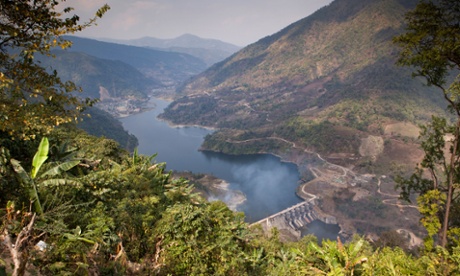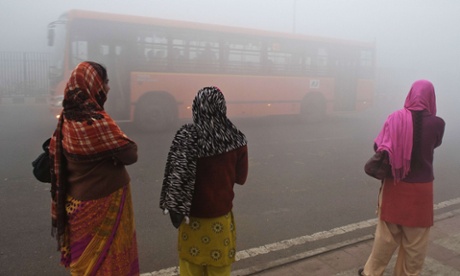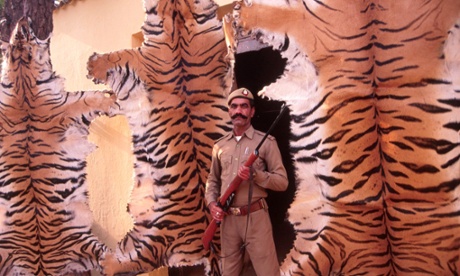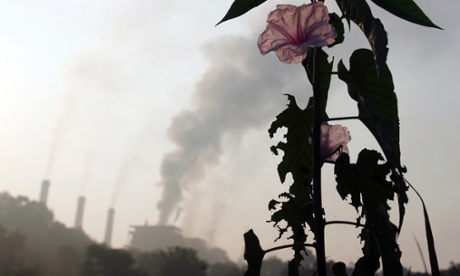Called Making a pig's ear of it on
BLink 26 Sept 2014
Rocks protruded dramatically out of the hillside. Weathered and evenly grooved, they looked like petrified wood. I recognized neem and Indian mulberry trees dotting the landscape. Down in the valley, a linear grove of verdant date palms marked an unseen water course. Tussocks of grass with tall seed heads brushed against my salwar. With head bent down, I was engrossed in identifying plants and on the look-out for mammal droppings as I picked my way up the hillside. The expanse of forest was so vast, I couldn’t gauge distances, nor could I estimate the height of distant trees. This is one of the largest restoration sites in India: the Timbaktu Collective’s Kalpavalli forest in Andhra Pradesh’s Anantapur District.
Siddharth Rao, the resident ecologist, had just pointed out a blackbuck latrine site. These graceful antelopes habitually visit the same spot to drop their black, oval pellets. Wolves, jackals, leopards, foxes, and sloth bears also called this place home, and I was keen to find some evidence of their presence. The constant distant hum of airplanes flying overhead made me think even this remote area was under an air corridor. Absentmindedly, I looked up at the blue sky and realized there were no airplanes. The sound was caused by the gigantic blades of numerous windmills slowly turning in the golden evening light. I had seen them on arrival but had forgotten them as I focussed on plants and creatures.

The more I wandered along the hill slope, the more I realized the restoration was an unsung conservation effort. Folks from eight villages had slogged to restore 7,500 acres of completely denuded pasture land that’s commonly dismissed as wasteland. I just had to see the barren, rocky hills outside the Kalpavalli area to know what the villagers had achieved. They planted seeds, protected saplings from livestock, created fire lines, built check dams, dug trenches, and put out fires day and night. Not a mean feat in the second driest area of the country, where summer temperatures can sear the pale of skin and heart. If the meagre rainfall failed, drought was certain. Despite more than 20 years of effort, the hill slopes were lightly wooded. If the annual rainfall were higher or had the topsoil been intact, the outcome would have been a thick green canopy.

The villagers went through this punishing regimen of creation and protection for a very good reason. They could harvest grass to thatch their roofs and make brooms, lop leaves for their livestock, and gather dead branches for firewood. For the poorest people, this made a difference to their standard of living. Their collective labour benefited rich and poor farmers alike. The ground water has risen from 100-feet depth to a mere 18 feet. A seasonal stream turned perennial, feeding into the 400-acre-large, 500-year-old Mushtikovila tank.
A couple of years ago, I received an email from Timbaktu asking how to keep pigs away from crops. I shared the wisdom of farmers in other parts of South Asia: the crackling noise of clusters of magnetic tape tied to the fence, and cordoning fields with old saris and fishing nets were said to scare away pigs. If none of these worked, I jokingly offered to share a good pork recipe.
I didn’t know how they fared. When the opportunity arose, I headed up to Anantapur District to see for myself. I wondered if the restoration had a role to play in the villagers’ wild pig problems. I followed Siddharth up the hill, lost in my thoughts.
Wheat-brown blackbuck does and fawns eyed us suspiciously before disappearing over the rise. Moments later, a lone, scruffy wild boar raced away in alarm.

After nightfall, we walked down to the stream. Fish darted underwater, frogs hung suspended on the water surface, and clots of algae moved slowly downstream. Water flowed even though it hadn’t rained in several months. We walked through the dense thickets of palms, wary of pigs. If we snuck too close to them, they could attack. The eyes of a civet and jackal reflected the light from our torches.
The next morning, we were back in the plains, driving down the highway. Colourful clothes tied to fences flapped in the breeze. Even though the forests were a few kilometres away, every lush field had a low platform covered by a tarpaulin-lined roof. These machans were a sure sign of sleepless farmers guarding their crops.
I asked Akulappa, one of the key people in the Kalpavalli project who grew up in the area, if the problem of wild boars was related to forest restoration. He answered thoughtfully, “There were no wild boar before. The first time I heard of one was in 1990 or 1991 when villagers from Nyamaddala killed one. Now pigs are everywhere. Not only wild boar, but also leopards, jackals, everything. This area was infamous for factionalism. In 1986, when N.T. R. [Rama Rao] was the Chief Minister, he seized all firearms. May be that’s why all these animals came back five to six years later.”
The restoration project began only in 1992, and according to Akulappa, pigs had already started making a comeback. Could it be that the lack of hunting more than the creation of a forest caused wild boar to surge in numbers?
Akulappa continued, “People say the forest provided shelter and that’s why these animals came. That’s not true. These animals don’t need habitat as much as we think. They are adaptable; they can live under rocks and thorny shrubs. Even newspapers say crops failed because of wild boar. Come, let’s go to that village and show me where is the forest. There are no forests, it’s all agricultural land, and there’s still a problem of wild boar. So don’t say growing trees brings wild boar. They don’t need forests to destroy your crop. They are everywhere.”
I quizzed farmers about their relationship with the forest, and they revealed a whole other dimension of the problem.
Nagaraju, one of the directors of Kalpavalli Tree Growers’ Cooperative and a groundnut farmer from Kogira, said he faced severe problems from pigs. He claimed the increase in forest had brought a greater diversity of birds that ate a lot of crop pests. Forests didn’t create the pig problem but windmills did. I was taken aback and looked at him quizzically wondering if I had heard right. He explained the whine of the wind turbines and disturbance caused by maintenance crews driving up and down have chased the wild boar away from forests and into the plains. Windmills also blew away rain clouds and sucked groundwater dry. The only thing that could protect crops was a high wall, he said, but he couldn’t afford it.

Ramanjanaiyya from Kambalapalli grew groundnuts and lentils, and pigs made a merry meal of them. He had tried tying saris around the fence but that didn’t work. He and his wife took turns walking around the fields, constantly yelling and beating a drum all night long. He said the moment he sat down for a rest, they muscled their way through the fence. He asked, “How many nights can I stay up awake? During the day, my wife and I take our sheep grazing. At night, one of us guards the animals at home, while the other watches the crops.” He also blamed the windmills for his wild pig woes.
Chinna Narasimha, of the same village, said the pigs were bold. “Even if I stand right next to them and shine a light on their faces, they still try to enter the fields.” While pigs ate anything, blackbuck ate lenthils. The windmills were the reason he lost almost half his crop to pigs, he complained. Only a deep wide trench would stop the pigs from entering fields, he said.
Neelakant cultivated 130 acres for the Timbaktu Kutumbham Trust. Even if pigs didn’t like the crop, they rooted around and destroyed the plants. He picked up hair clippings from barber shops and spread them on his fields. “It worked well in the dry season. When the pigs sniffed the ground, the hair entered their nostrils and irritated them. They don’t like that. When the rains came, it didn’t work anymore.”
He continued, “I also tried old saris, gunny sacks, plastic bags, plastic dolls.... On the first day they won’t come. The second day, they listen and wait. If it makes the same noise, they’ll approach cautiously, and then they lose all fear. Even magnetic tape works for one day, but the next day it doesn’t work. Same with fire crackers.”
I burrowed into details: how much of the crop was lost, which crops suffered less damage, and did pigs eat crops in a particular season. It was several minutes before I realized pigs were a metaphor of the villagers’ unhappiness with the windmill companies.
While wind energy is celebrated as a sustainable source of power, a green energy, here in Anantapur, wind farms have come at a cost to the community forest. Wind power companies hacked wide roads around hillsides, destroying the trenches villagers built to arrest the flow of rainwater and toppling two-decade-old trees. Since retaining walls haven’t been built, boulders and loose soil sit precariously on the verge. The 10- to 14-feet embankments are too high for livestock to scramble up. Villagers are forced to drive their animals in circuitous paths to reach their destinations. The companies also flattened peaks of hillocks to install windmills.
But one incident upset villagers more than any others. Farmers in the area donate cattle to the Guttur Gopalaswamy temple set deep in the forest. This herd of holy Hallikar cattle, an indigenous breed, grazes in the restored forest. Soon after the windmill construction, about 100 cattle died. They had eaten the plastic carelessly discarded by the construction workers.
By trampling villagers’ efforts, the wind farm companies have unleashed the pigs of conflict.








